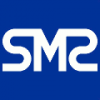From the simplest single-sided printed circuit board (PCB), populated with a few through-hole components; to complex multi-layer boards with blind & buried vias and impedance-matched tracks; practically every electronic product requires a PCB.
Schematic Design
With our extensive background in analogue and digital design, we are able to undertake schematic design of most types of electronic circuits. This stage of the process is frequently run in parallel with prototype manufacture, with modifications made to the prototype being echoed in the schematic design.
- Low power / low cost microcontrollers
- High performance microcontrollers & microprocessors
- Bus design including DDR & differential signalling
- High speed communications including USB/Ethernet/HDMI/LVDS etc.
- Power supply design, including ultra-low power & solar-based
- GPS / GSM (GPRS/3G/4G)
- Video hardware – Cameras / digital video / DVB
- See the Hardware page for a mode detailed list

PCB Layout
Experience of designing PCBs, ranging from simple single-sided boards up to complex 8-layer designs with multiple power planes and precise impedance matching. We generally favour hand-routing PCBs, over using an auto-router since the human mind is unrivalled in its ability to visualise the optimum layout, and the results are invariably better, and aesthetically more pleasing. Also, a hand-routed board is frequently more compact, and may require less layers, than a machine-routed PCB, resulting in cost savings for the customer.
- High speed & RF design, incorporating stripline/microstrip techniques, trace length calculations, and computer simulations.
- High power design (frequently encountered in LED luminaires), including thermal modelling and alumina-substrate PCBs.
- High-density design, for the smallest possible form-factor of the finished product. Utilising fine-pitch and BGA packages, and passives down to 0201 if required.
- Back-annotation to schematic ensuring a logical component numbering scheme, and design optimisation by using the best PCB routing where multiple, identical gates are available.

PCB manufacture
Although we do have the facilities to make small volume prototype boards, we generally out-source the majority of our PCB manufacture to one of our partners in the UK, or in the Far-East (for large volumes).
- Extensive history of dealing with PCB manufacturing companies, with detailed knowledge of the techniques and types of boards that can be made, and the most cost-effective designs and tooling set-ups.

PCB assembly
We utilise a combination of in-house labour and outsourcing for PCB assembly, depending on the type of components used and the volumes required.
- All types of through-hole assembly can be undertaken in-house, in small to medium volumes. We generally wouldn’t recommend full through-hole design on anything other than very small volumes, or updates to legacy designs.
- Surface-mount is almost always outsourced and machine-built in volume, and this is the most cost-effective route for modern designs. The only exception to this is when we hand-assemble a surface mount board for testing, or if a pre-production product is required quickly. We are able to hand-place most surface-mount components, and solder in a desktop reflow oven.
- Hybrid, consisting of mostly surface-mount, but with some large components (such as connectors and power devices) as through-hole. In volume, these are frequently outsourced for the surface-mount, leaving us to fit the large components before programming & testing the product.

Programming
Many products will feature one or more programmable elements which need to be configured before the product is complete, and this is generally done in-house. As the software on a complex microprocessor system can be more valuable than the hardware, this is an important security consideration.
- Programming of embedded microcontrollers, EEPROM, Flash memory, CPLDs, memory cards.
- Security and encryption on many devices.
- Field-updatable through bootloader from a PC with RS232 or USB.
- Remote update available for connected products (GPRS or internet connection).
Testing
The finished product will always need testing, and we try to automate this as much as possible. To run a complete set of tests on all of the inputs & outputs, and internal functionality of a product could take a skilled engineer many hours, especially if this involves a level of calibration. We will generally use a combination of external test hardware (often microprocessor controlled, and in communication with the actual product), and test routines on the product itself.
- Custom test harnesses
- Integrated test procedures incorporated into the software
- Diagnostic terminal for field maintenance & debugging.

